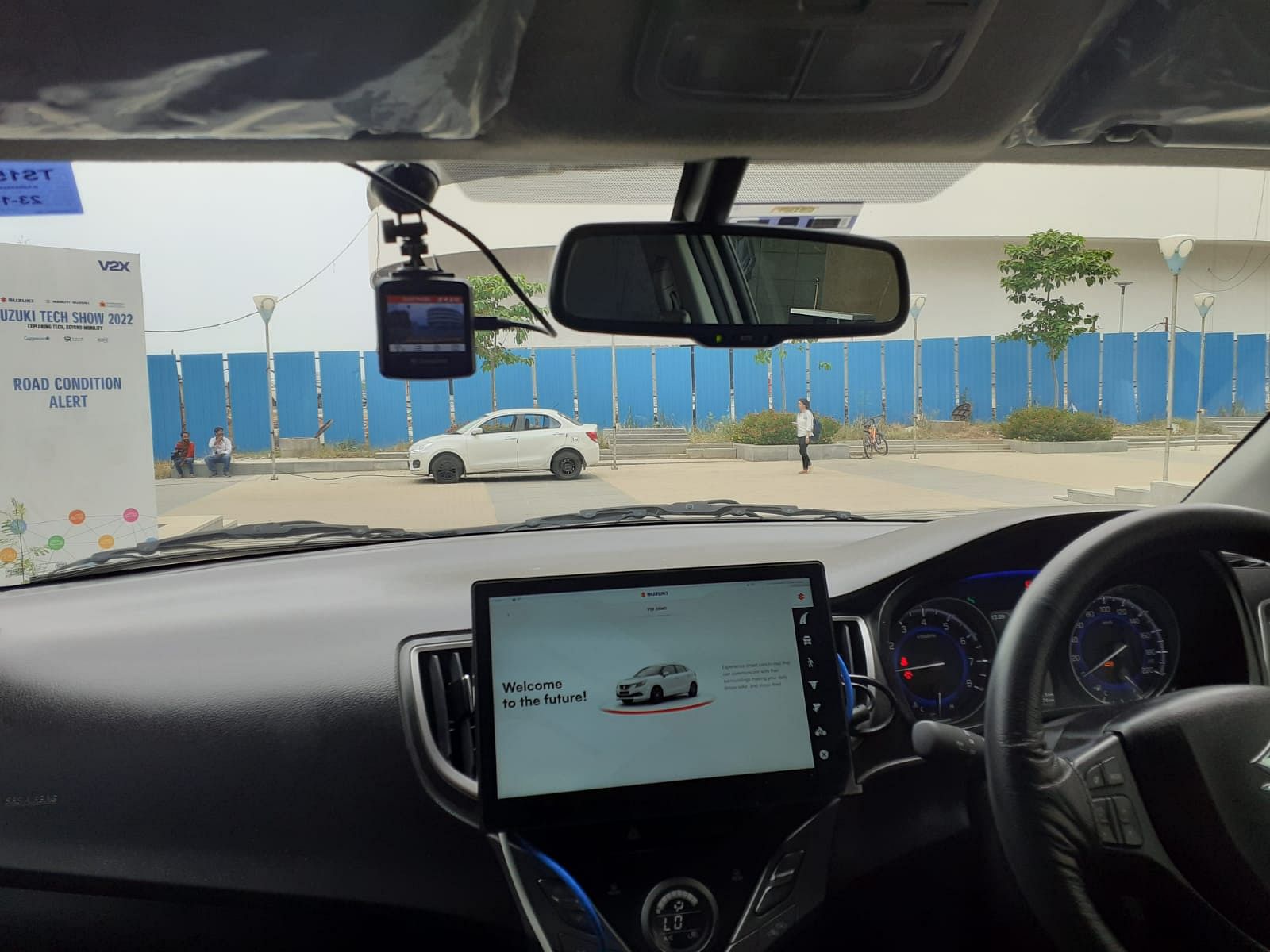
In what is touted as an industry first endeavor, Maruti Suzuki and Indian Institute of Technology Hyderabad are developing an India-specific V2X – Vehicle-to-Everything — communication technology to help reduce road accidents and congestion.
The application enables early detection of ambulances, vehicles approaching on the wrong side, jaywalking pedestrians etc and alerts the driver to respond promptly. For the system to work, the necessary instruments have to be installed on all the vehicles involved in a road scenario. Even pedestrians need to wear the device or relevant app installed on their phones for an approaching car to detect them and caution the driver.
“The idea is to enlarge the driver's cognition from the mere windshield vision,” says Prathyusha Thammineni, an R&D engineer of Suzuki Japan and IIT-H alumna, associated with the project.
The prototype vehicles showcasing five experimental scenarios in the Indian context were demonstrated before the senior officials of the department of telecommunications, the government of India and Jayesh Ranjan, Principal Secretary, IT and industries, Telangana at the IIT Hyderabad campus near Hyderabad on Wednesday.
However, “the futuristic technology” has to be refined and tested in real-time settings, needs regulatory approvals, participation of all stakeholders including other motor vehicle production companies and could take several years before introduction on the Indian roads.
“Our idea is to mainstream the technology for next-generation vehicle users. For that we have to start experimenting now,” Tarun Aggarwal, executive director (Research, Design and Development), Maruti Suzuki India Limited told DH.
Such experimentation is underway in Europe where it is expected to be rolled out by 2025.
The V2X project – a collaboration of Suzuki Motor Corporation, Japan, Maruti Suzuki India Limited and IIT Hyderabad, with support from Capgemini, Soar Robotics, USA and Boinc – began about two years ago.
Not divulging the project's budget or instrument cost details, Maruti Suzuki officials said the size and cost of the apparatus is expected to come down with mass production. “We have no plans of putting the V2X system in any of our cars now.”
Stressing on the need to expand the experimentation from safe, sanitised conditions to real-time, actual-world scenarios, Ranjan said that the technology can be further tested for a prolonged period like six months in a select location in Hyderabad, and improved in order to make it a reality.
Road accidents are reportedly costing the country 3 per cent of its GDP every year.
Five case scenarios
Ambulance Alerting System: Car drivers are alerted about an approaching emergency vehicle and its path through V2X communication. It helps the driver to safely plan manoeuvres and make way for emergency vehicles. The alert system will also share minute details like the distance between the vehicles on a real-time basis.
Wrong-way Driver Alerting system: Car drivers get a pre-alert about the existence of a wrong-way-driver approaching using V2X communication.
Pedestrian Alerting System: This alert assists car drivers about a pedestrian nearby, using V2X communication, who could be coming in the way of the car. This will help the drivers to take precautionary measures to avoid a potential collision.
Motorcycle Alerting System: Car drivers learn through V2X communication about a fast-moving 2-wheeler approaching from a blind spot and likely to collide. Real-time information is shared with the driver about the distance and direction of approach.
Road Condition Alerting System: The driver receives an alert of bad road conditions and cautions the driver to tread carefully ahead in the journey.